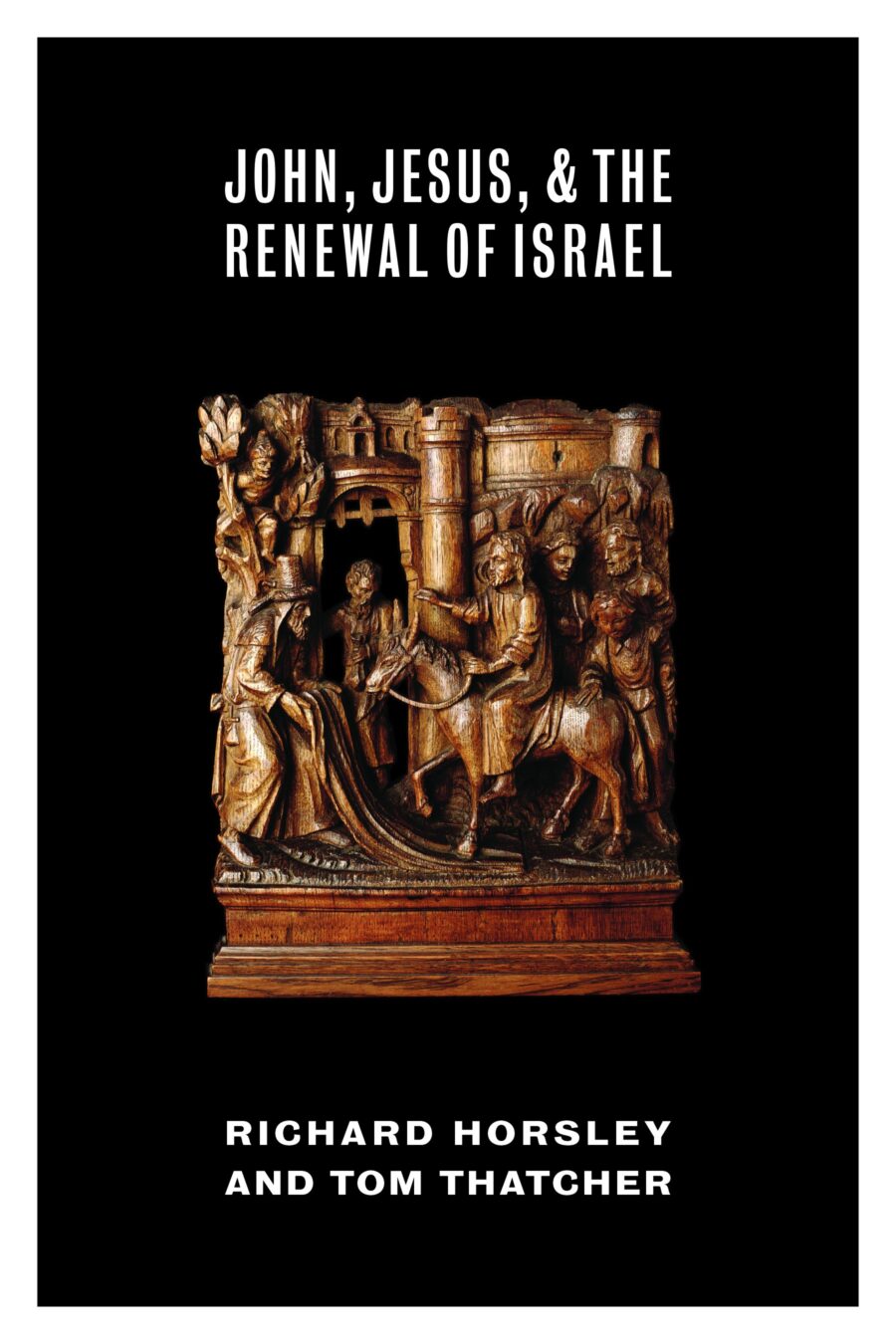In John, Jesus, and the Renewal of Israel, Thatcher and Horsley argue for a fresh reading of John’s Gospel. They contend that John presented Jesus as one whose ministry enacted Israel’s renewal in opposition to the Judean establishment and their Roman supporters. The larger goal of their work is to establish John as a valid source for Historical Jesus studies. Their argument advances in four steps. First, they outline the political-religious-economic environment of Roman Palestine. Second, they discuss the synoptics and Q as whole narratives for the sake of comparison. Third, they consider what can be known of Jesus from John’s gospel. Fourth, they focus on Jesus as one engaged in the renewal of Israel.
Step one argues for a strong and abiding division between the ruled and the rulers. This division is economic, religious, and political. The rulers have their own religious tradition based upon the written Torah. They use the scriptures to validate and maintain their power. On the other hand, the ruled remember the popular leaders of Israel’s history and God’s mighty saving acts. This division was economic in that the rulers benefited from the unfair taxation system that burdened the commoners. It was political because the Judean Temple establishment cooperated with the Roman power structure.
In step two, the authors turn their attention to a consideration of the Gospels themselves. They criticize the tendency to separate them into individual sayings and episodes. Instead, they encourage us to interpret the Gospels as “historical stories” with their own aims and intentions. According to Horsley and Thatcher, each Gospel presents Jesus as the fulfillment of Israelite history. They believe that the main concern of the Gospel of Mark is the conflict between Jesus and the Judean authorities. Similar to the prophets of the Old Testament, Jesus counters both the Judean establishment and foreign rulers. They see Q as broadly congruent with the themes they find in Mark, and thus Luke and Matthew. All present Jesus as one engaged in the renewal of Israel over against the current Israelite power structure. In doing so they call attention to the revolution in interpretation brought about by the realization that communication in antiquity was largely oral. Given the distrust ordinary people had for the written word, it is best to consider the Gospels to be stories told and modified in community. They were written down later to give them the aura of permanence.
In step three, they analyze the Gospel of John following the same procedure in step two. John is best summarized via the language of setting, character, and plot. Jerusalem was the place of opposition. Jesus was well received in the outlying areas. The main characters were: Jesus (Israel’s Messiah), his growing band of disciples in the countryside, and the Judean Temple establishment. The plot is one of rising tension, climaxing in Jesus’ death and resurrection. Reflecting on the material just presented, they believe John presents a historically plausible presentation of Jesus.
The fourth and final step outlines the Jesus that arises from their reconstruction. Instead of seeing Jesus as a founder of a new religion, he should be understood as one engaged in the renewal of Israel in opposition to the Judean establishment on one hand, and their Roman patrons on the other. He goes about this work in his status as Messiah and prophet. This is to be understood as the role Jesus assumes in relation to the people of Israel, not as an individual who had been promised to arrive in the future.
The outcome of their work is to challenge the standard interpretation of John’s Gospel as presenting Jesus versus the Jews. It is more accurate to say Jesus represented, within first century Judaism, the disenfranchised critique of the Judean Temple power structure and their Roman enablers.
Thatcher and Horsley wanted to make a case for treating John as a valid historical resource. I believe they have succeeded in making that case, even if we might disagree with some of their reconstructions. Furthermore, their central claim that John presented Jesus as Israel’s Messiah who through his ministry enacted the renewal of Israel over against the established powers in Jerusalem and their Roman supporters has much to commend it.
Review by Esau McCaulley
University of St Andrews





Leave a Reply
Your email is safe with us.